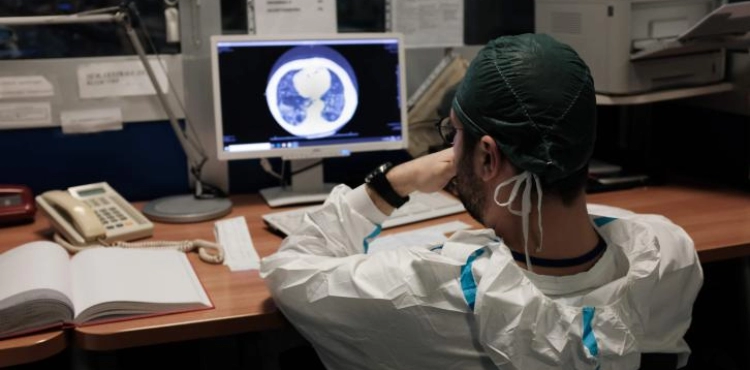Tens of thousands of video players and a "data miner" coin by default and corporate formation are participating in an unprecedented project to unify information resources in order to accelerate research to find a cure against the emerging corona virus.
"This is a great remedy against the feeling of helplessness that we have in these moments," said Portuguese lawyer Pedro Valadas. This man coordinates the work of a group that represents one of the largest contributors to the project and includes 24,000 people who are passionate about computers and video games.
The project, called "Folding at Home" and led by informatics biologists, connects thousands of machines with each other, developing a virtual super computer.
"This computer will be the strongest in the world and it will run thousands of billions of calculations per second, which would allow understanding the structure of the virus.
More than 400,000 people have uploaded an application that shares data and information resources over the past weeks, according to Greg Bruman, a professor of chemistry and biomolecular physics at Washington University in St. Louis, where the project is centered.
"Many of us have suffered or seen their relatives suffer. It is truly stimulating that anyone from his home and on his personal computer is able to play a role in helping to fight disease for the common good," Badro Valadas comments.
The project was launched at Stanford University in Silicon Valley twenty years ago. The goal was to share the computational mathematical capabilities to conduct large-scale simulations of diseases, especially with regard to the process of "protein folding" that plays a role in mortality from certain pathogens.
"Simulations allow us to monitor how each atom develops," explains Greg Bruman.
Researchers are seeking to create "pockets" inside the virus that allow therapeutic molecules to be stabilized to disrupt its effect.
Greg Broman trusts this method of developing drugs through informatics, because it previously allowed a target to be identified in the Ebola virus, and given the similar combination between Covid-19 and SARS (severe acute respiratory syndrome), which has been the subject of many studies.
"If we identify a molecule that is already there that can fix one of these pockets, we will soon be able to use it" to develop a treatment, Bowman says.
Among the existing molecules that may be suitable for this role, treatment against malaria is emerging as an option that may be useful in addressing the emerging coronavirus.
The "Folding at Home" project allowed the information capabilities of this virtual supercomputer to be increased to 400 betaflops (each betaflop is equivalent to one million billion accounts per second), making it three times stronger than the best supercomputers available in the world.
"In principle, there is no limit to the power of calculation that we can use," Greg Broman asserts.
Anyone who owns a computer of modern models or even a "Play Station" for video games can contribute to the project by downloading the application and choosing the research that they wish to support. Several major companies, including Microsoft´s JetHub, are involved in the project.
Quentin Rhodes Herrera of the "Creative Start" company summarizes the project, "It is like making a coin with a composition, but in the service of humanity." The company is providing this project with a computer specially designed to encrypt passwords used in "Folding at Home".
NVIDIA, the maker of processors and video cards, has also invited video players to contribute to the project, as they are often well equipped in terms of account strength.
"The response came as astonishing as tens of thousands of people joined the project," explained Hector Mariniz, Nvidia´s spokesman.
Other supercomputers are used in similar projects. The US Oak Ridge laboratory, for example, uses a supercomputer from the US giant IBM.
In early March, this laboratory announced that it had identified 77 potential components with the potential to attach to the main protein of the Coronavirus to disable its pathogenic components.












